What is Plasma Chain? Stablecoins, XPL Tokenomics & Airdrop
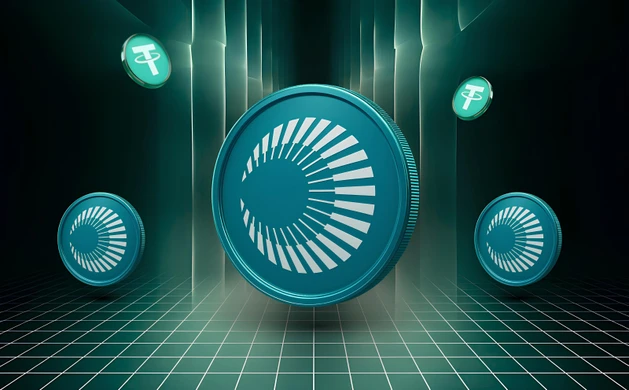
Summary: Plasma is a new Layer 1 chain built for stablecoins, supporting gasless USDT payments and secured by recording checkpoints into Bitcoin’s blockchain. The network is in testnet now, with Mainnet Beta expected later in 2025 under its PlasmaBFT finality system.
XPL, Plasma’s native token, has a fixed supply of 10 billion for staking, incentives, and governance. Distribution includes a 10% public allocation, with funding rounds of $3.5 million seed, $20.5 million Series A, $50 million public raise, and Binance’s $250 million stablecoin-yield airdrop campaign.
Plasma Chain, launched in 2025, is a Layer 1 blockchain optimized for stablecoin payments, offering gasless USDT transfers and Bitcoin-backed security.
Token Supply
10B XPL total; 10% public, 40% ecosystem, 50% insiders
Consensus
PlasmaBFT finalizes in seconds, secured by Bitcoin
Funding
$3.5m seed, $20.5m Series A, $50m sale, Binance $250m program
What is Plasma Chain?
Plasma Chain is a Layer 1 network built for stablecoin payments, enabling fast, secure, and borderless digital transactions at global scale. Instead of repurposing general-purpose blockchains, it focuses entirely on stablecoins, which is crypto’s largest use case after Bitcoin.
The network introduces features such as zero-fee USDT transfers, customizable gas tokens, and confidential transaction options. Together, these innovations reduce friction for users and developers, making payments simpler, cheaper, and more flexible than on traditional blockchain infrastructures.
With stablecoins already exceeding hundreds of billions in supply and trillions in transaction volume, Plasma targets the role of settlement infrastructure. Its combination of high throughput, deep liquidity, and EVM compatibility offers a foundation for internet-scale financial applications and payments.
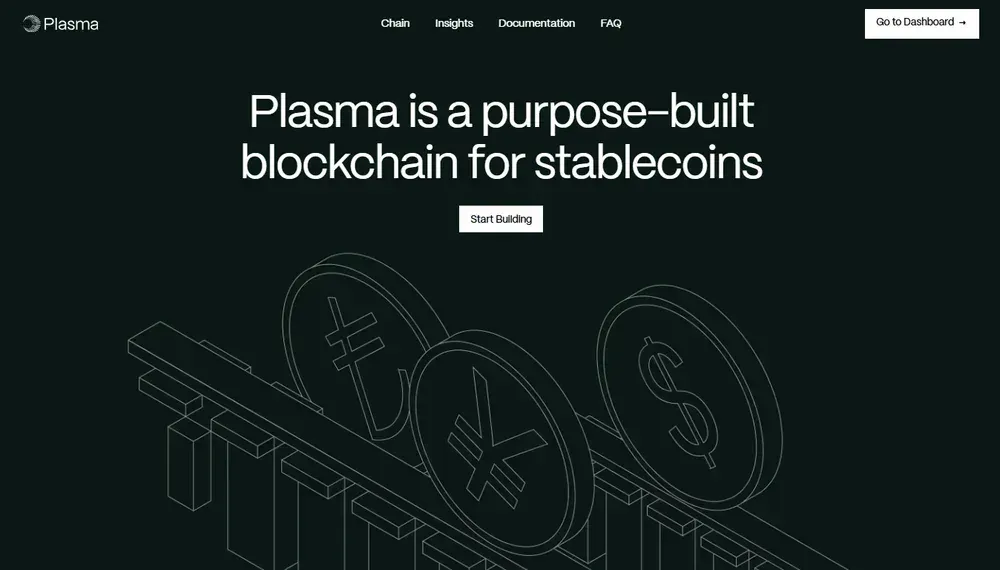
How Does Plasma Chain Work?
Plasma Chain processes stablecoin payments through three integrated layers: consensus, execution, and external stabilization using the Bitcoin network.
The network is structured around several core components:
- Consensus Layer (PlasmaBFT): Validators stake XPL and finalize blocks within seconds, providing instant, irreversible confirmation through Byzantine Fault Tolerant consensus.
- Execution Layer (EVM-Compatible): Plasma runs Ethereum’s Reth engine in Rust, allowing existing Solidity smart contracts to deploy seamlessly at higher performance.
- Bitcoin Anchoring: Plasma periodically stores cryptographic checkpoints in Bitcoin’s ledger, making history alteration nearly impossible without rewriting Bitcoin itself.
- Native Bitcoin Bridge: BTC moves into Plasma as pBTC using decentralized verifiers, enabling secure deposits and withdrawals without custodial control.
- Zero-Fee Stablecoin Transfers: Everyday USDT transfers incur no fees, with a protocol paymaster sponsoring gas while filtering spam through verification.
- Custom Gas Tokens: Users pay fees directly in USDT or BTC, automatically converted into XPL without extra costs or hidden charges.
- Confidential Payments: An optional privacy layer enables hidden transaction details while still allowing selective disclosure when audits or compliance require it.
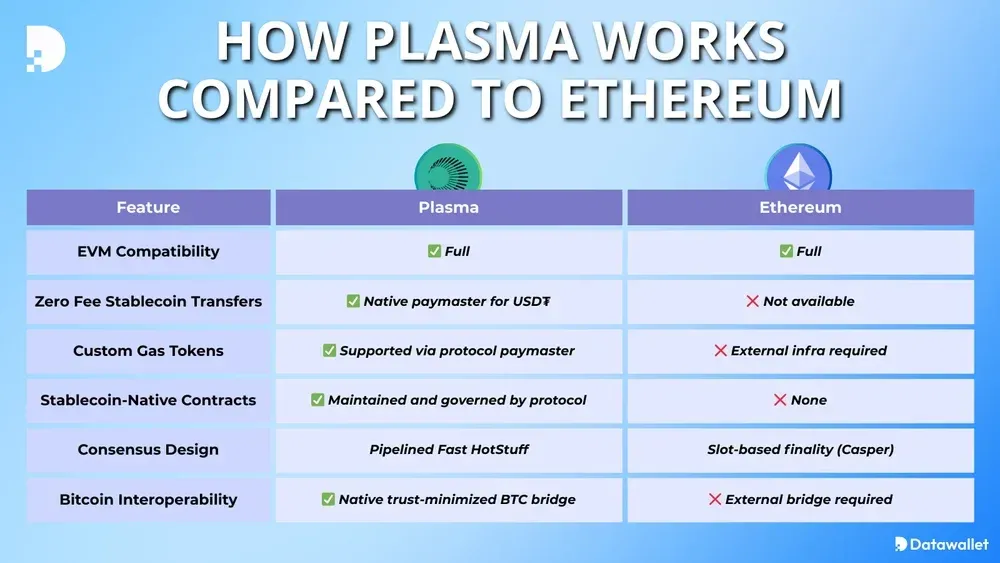
PlasmaBFT Explained
PlasmaBFT is Plasma’s consensus mechanism, meaning the process the network uses to make sure every participant agrees on transaction order. It is based on Fast HotStuff, a protocol that reaches agreement even when some computers fail or act dishonestly, keeping the network secure.
Where many blockchains rely on probabilistic confirmation that can take minutes, PlasmaBFT promises deterministic finality, locking every transaction instantly and irreversibly. This provides the speed and stability required for handling stablecoin payments at a wider scale without delays or inconsistencies.
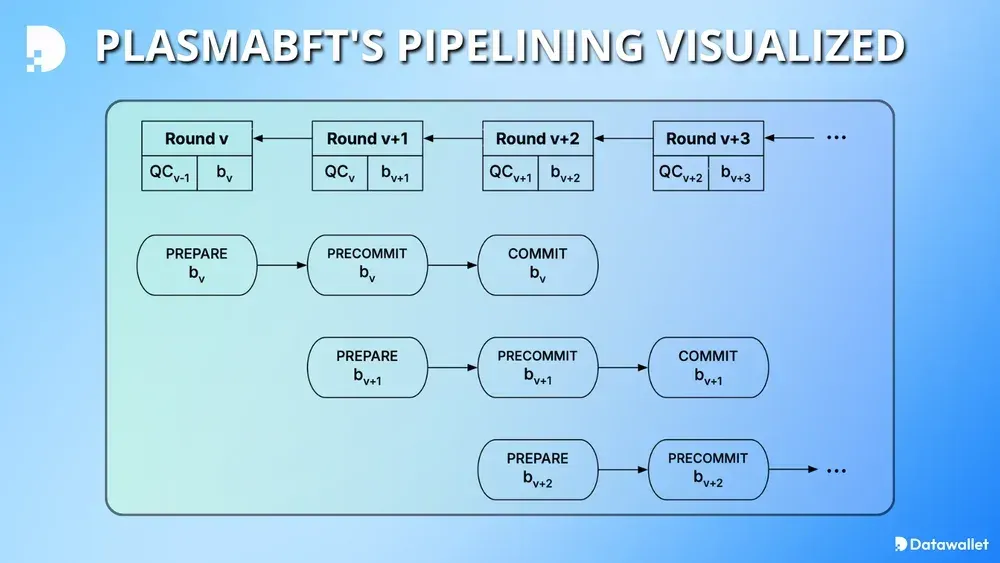
How to Use Plasma Chain
Using Plasma Chain feels familiar to Ethereum users but adds benefits like gasless transfers and custom gas token support. Here’s a simple step-by-step guide for getting started once the mainnet is live.
- Set up a wallet: Install MetaMask or another EVM-compatible wallet, then manually add Plasma using its RPC details, chain ID, and explorer.
- Get stablecoins: Acquire USDT from a supported exchange or through cross-chain bridges, and transfer directly to your Plasma wallet address.
- Obtain XPL if needed: While USDT transfers are free, advanced dApp interactions or contract executions may require holding small XPL balances.
- Connect to apps: Switch your wallet network to Plasma, then access the dashboard or decentralized applications (dApps) exactly like using Ethereum protocols.
- Send stablecoins: Instantly transfer USDT with no gas fees for basic payments, or pay minimal costs for more complex actions.
- Track activity: Use https://app.plasma.to/portfolio to verify your transfers and wallet balance, and explore ecosystem opportunities as they become available.
- Explore dApps: Participate in lending, stablecoin trading, or payments on Plasma’s EVM layer, enjoying faster and cheaper transactions than Ethereum.
- Optional staking: Acquire XPL and stake or delegate to validators once available, helping secure Plasma while earning staking rewards.
Overall, using Plasma Chain is straightforward and feels natural for anyone familiar with Ethereum wallets or stablecoin transfers. Transactions are near-instant, fees are minimal or nonexistent, and everything works with familiar tools like MetaMask.
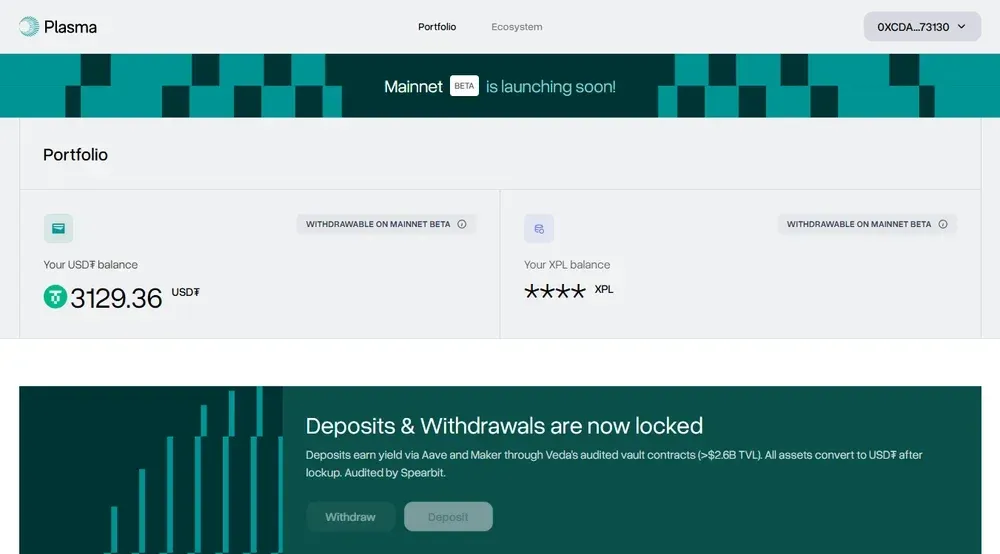
XPL Tokenomics
XPL is the native token of Plasma Chain, powering consensus, network security, and economic incentives. Its fixed supply of 10 billion tokens follows distribution mechanics that encourage quick early adoption.
Here’s a breakdown of XPL allocation and distribution:
- Public Sale (10%): 1 billion XPL distributed July 2025 through a time-weighted vault sale; non-US unlocked immediately, US tokens restricted 12 months.
- Ecosystem & Growth (40%): 4 billion XPL for liquidity, incentives, and partnerships; 800 million unlocked immediately, 3.2 billion vest monthly over three years.
- Team (25%): 2.5 billion XPL allocated to founders, developers, and employees; one-year cliff, remaining vests monthly across the following two years.
- Investors (25%): 2.5 billion XPL for early backers and strategic partners; identical vesting schedule as team allocation with one-year cliff and two-year linear release.
Beyond distribution, XPL is central to Plasma’s Proof-of-Stake consensus where validators stake tokens to secure the chain and earn rewards. Inflation begins at 5% annually and decreases to 3% over time, partially offset by transaction fee burns under EIP-1559.

How to Farm the Plasma XPL Airdrop?
Farming XPL as an early user has been possible through official programs and community participation. While opportunities are limited, we have identified two main paths available to early users so far.
1. Binance USDT Yield Program
Plasma partnered with Binance in August 2025 to distribute 100 million XPL (1% of supply) via a savings program. The program had several defining features, including:
- Deposit Cap: Up to $250 million USDT could be locked through Binance Earn, with users earning both USDT yield and XPL rewards.
- Reward Pool: 100 million XPL was allocated proportionally to deposits, distributed to participants after Plasma’s mainnet launch.
- Program Demand: The cap filled in less than one hour, reflecting extremely strong appetite for early XPL exposure, possibly leaving room for similar campaigns in the near future.
- Future Rounds: Plasma suggested similar partnerships may return, so monitoring exchanges is critical for upcoming airdrop-style programs.
2. Testnet Participation and Galxe Quests
Plasma’s testnet is not incentivized, meaning no official token rewards are promised for usage or testing at this stage. Still, there are several potential paths for earning a future airdrop allocation using it:
- Testnet Usage: Users can add Plasma’s testnet to wallets, claim faucet tokens, and perform trial transactions as early adopters, that will give them advantage when the mainnet launches.
- Community Quests: Galxe campaigns offer tasks like social follows or content sharing, rewarding users with verifiable onchain badges and a points system.
- Growth Allocation: Plasma’s ecosystem fund may support retroactive rewards, though nothing is confirmed and outcomes remain speculative.
- Early Advantage: Active participation demonstrates commitment and may increase eligibility if community rewards or future airdrops are introduced.
Is Plasma MiCA Compliant?
Yes. Plasma has released a 37-page MiCA Whitepaper, which we reviewed, explicitly aligning with EU Regulation (EU) 2023/1114. The document was officially notified on June 17, 2025, and follows the full disclosure standards of the Markets in Crypto-Assets Regulation framework.
The whitepaper contains risk disclosures, details about the issuer (Plasma Inc.), token classification, offer structure, safeguarding arrangements, and investor rights. It also confirms Article 6(6) compliance, stating the information is fair, clear, not misleading, and omits nothing material.
Practical MiCA features include EU withdrawal rights under Article 13, a 12-month US lockup, and safeguarding by BitGo Europe GmbH (a licensed CASP under BaFin). Together, these demonstrate that XPL’s offering was structured to meet MiCA standards while still being accessible globally.
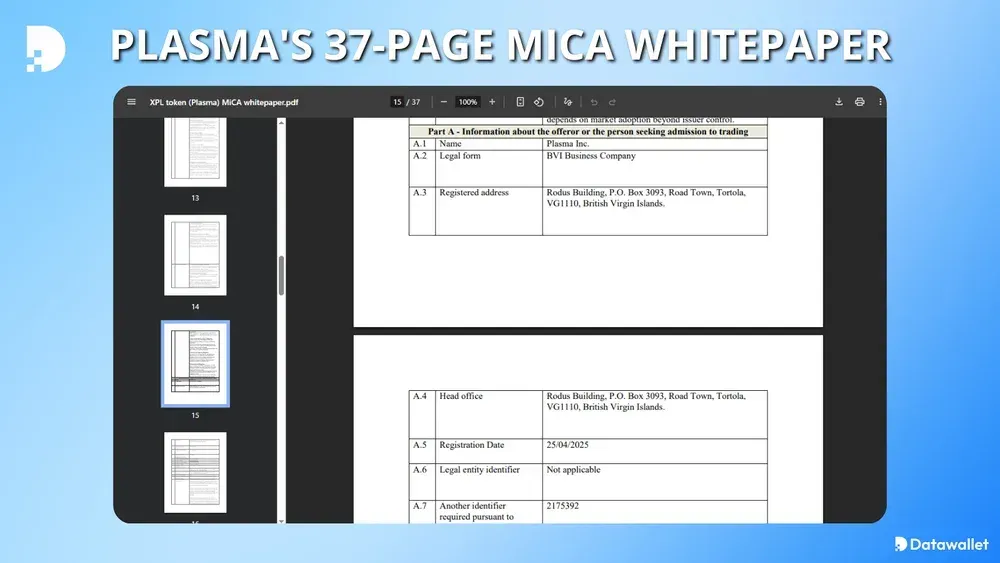
Plasma Chain Risks
Plasma Chain’s MiCA Whitepaper also outlines a wide range of potential risks. These span from token sale mechanics to long-term adoption and technology challenges.
The key risk areas identified include:
- Sale Structure Risks: The vault-based, two-phase token sale may confuse participants, with 40-day deposit lockups limiting liquidity.
- Liquidity and Market Risks: XPL’s value depends on exchange listings, trading activity, and volatility, with risks of delisting or exchange insolvency.
- Issuer Risks: Plasma Inc. is newly established with no financial history, facing potential operational, legal, or reputational challenges.
- Technology Risks: PlasmaBFT and custom features are under development, carrying risks of bugs, security flaws, or scalability limitations.
- Regulatory Risks: While MiCA-compliant, evolving laws or enforcement actions could impact XPL’s classification, usage, or availability in different jurisdictions.
- Adoption Risks: Success relies on developers, stablecoin issuers, and institutions embracing Plasma; weak adoption could depress token value and usage.
- Security Risks: Smart contract vulnerabilities, validator collusion, or attacks on the Bitcoin bridge could undermine stability or user funds.
- Custody and User Risks: Token holders bear full responsibility for wallet security; lost keys or scams result in permanent asset loss.
Plasma Chain Founders
Plasma Chain was co-founded by Paul Faecks, a DeFi entrepreneur who previously launched the fintech startup Alloy in 2021. Faecks leads Plasma’s operations and technology, focusing on building infrastructure capable of handling global-scale stablecoin payments efficiently and securely.
His co-founder Christian Angermayer is a billionaire investor with deep ties to Tether, Bitfinex, and traditional finance institutions. Angermayer shaped Plasma’s early funding and partnerships, providing important credibility that attracted backers like Peter Thiel and other prominent investors.
Plasma Funding
Plasma first raised $3.5 million in October 2024 seed funding, led by Bitfinex and supported by Christian Angermayer. Other participants included Anthos Capital, Split Capital, Karatage, and Manifold Trading, linking Plasma with both venture and market-making expertise.
In February 2025, Plasma closed a $20.5 million Series A round, led by Framework Ventures with strong institutional participation. Founders Fund, Nomura, Flow Traders, Bybit, and DRW/Cumberland joined, alongside Paolo Ardoino of Tether, expanding business relationships further.
July 2025 featured a public vault sale of 1 billion XPL tokens at $0.05 each. The program raised $50 million but attracted $373 million in deposits, oversubscribed 7.5x via a time-weighted commitment mechanism.

Final Thoughts
Stablecoin payments are already surpassing Visa’s annual volume, and Plasma builds the highway carrying tomorrow’s unstoppable stream of digital dollars.
It offers instant confirmations and negligible fees, yet adoption still depends on developers, exchanges, institutions, and committed liquidity providers.
Plasma’s trajectory hinges on maintaining security, compliance, decentralization, and trust while scaling into the infrastructure of global stablecoin payments.
Frequently asked questions
Is Plasma Chain EVM-compatible?
Yes. Plasma supports full EVM compatibility, meaning Ethereum smart contracts and tools like MetaMask, Hardhat, and Foundry work without modification.
How fast are transactions on Plasma Chain?
PlasmaBFT finalizes blocks within 1-2 seconds, allowing thousands of stablecoin transactions per second with instant, irreversible settlement.
Does Plasma Chain support Bitcoin directly?
Yes. Plasma includes a trust-minimized Bitcoin bridge, enabling BTC to move into the network as pBTC without custodians.
Can users pay fees with stablecoins instead of XPL?
Yes. Plasma introduces custom gas tokens, allowing fees to be paid in USDT or BTC, automatically converted into XPL.
%2520(1).webp)
Written by
Antony Bianco
Head of Research
Antony Bianco, co-founder of Datawallet, is a DeFi expert and active member of the Ethereum community who assist in zero-knowledge proof research for layer 2's. With a Master’s in Computer Science, he has made significant contributions to the crypto ecosystem, working with various DAOs on-chain.

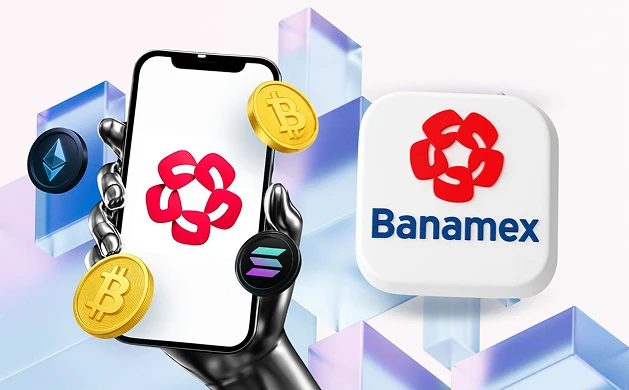
.webp)
%2520(1).webp)





